Parth Pathak
DeltaLLM: Compress LLMs with Low-Rank Deltas between Shared Weights
Jan 30, 2025Abstract:We introduce DeltaLLM, a new post-training compression technique to reduce the memory footprint of LLMs. We propose an alternative way of structuring LLMs with weight sharing between layers in subsequent Transformer blocks, along with additional low-rank difference matrices between them. For training, we adopt the progressing module replacement method and show that the lightweight training of the low-rank modules with approximately 30M-40M tokens is sufficient to achieve performance on par with LLMs of comparable sizes trained from scratch. We release the resultant models, DeltaLLAMA and DeltaPHI, with a 12% parameter reduction, retaining 90% of the performance of the base Llama and Phi models on common knowledge and reasoning benchmarks. Our method also outperforms compression techniques JointDrop, LaCo, ShortGPT and SliceGPT with the same number of parameters removed. For example, DeltaPhi 2.9B with a 24% reduction achieves similar average zero-shot accuracies as recovery fine-tuned SlicedPhi 3.3B with a 12% reduction, despite being approximately 400M parameters smaller with no fine-tuning applied. This work provides new insights into LLM architecture design and compression methods when storage space is critical.
Generative Multi-Stream Architecture For American Sign Language Recognition
Mar 09, 2020



Abstract:With advancements in deep model architectures, tasks in computer vision can reach optimal convergence provided proper data preprocessing and model parameter initialization. However, training on datasets with low feature-richness for complex applications limit and detriment optimal convergence below human performance. In past works, researchers have provided external sources of complementary data at the cost of supplementary hardware, which are fed in streams to counteract this limitation and boost performance. We propose a generative multi-stream architecture, eliminating the need for additional hardware with the intent to improve feature richness without risking impracticability. We also introduce the compact spatio-temporal residual block to the standard 3-dimensional convolutional model, C3D. Our rC3D model performs comparatively to the top C3D residual variant architecture, the pseudo-3D model, on the FASL-RGB dataset. Our methods have achieved 95.62% validation accuracy with a variance of 1.42% from training, outperforming past models by 0.45% in validation accuracy and 5.53% in variance.
FineHand: Learning Hand Shapes for American Sign Language Recognition
Mar 04, 2020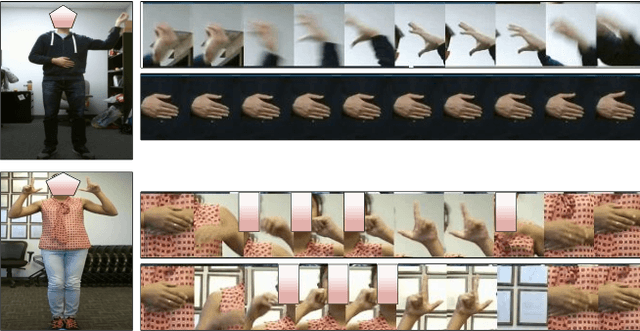
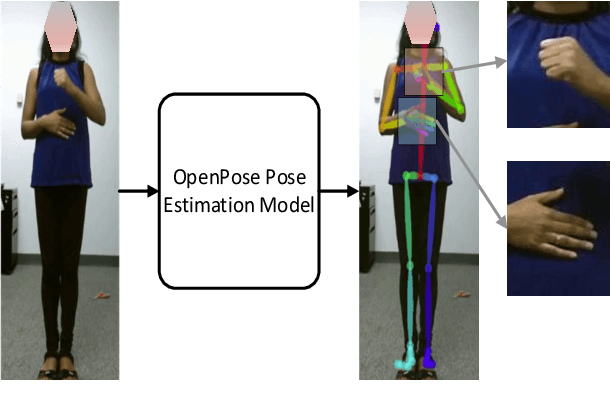
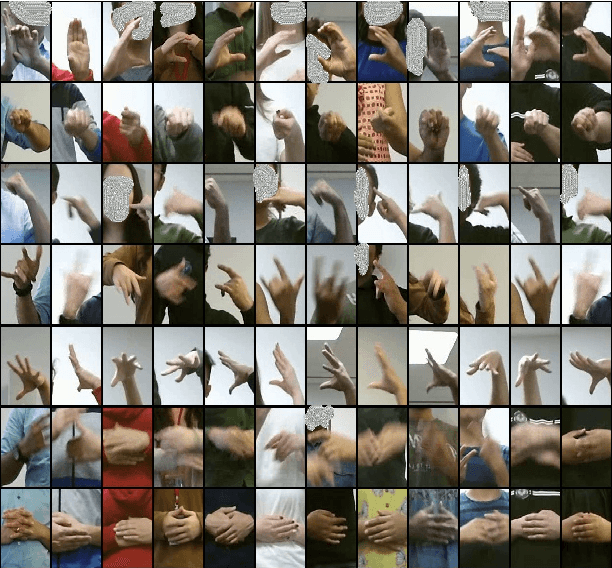
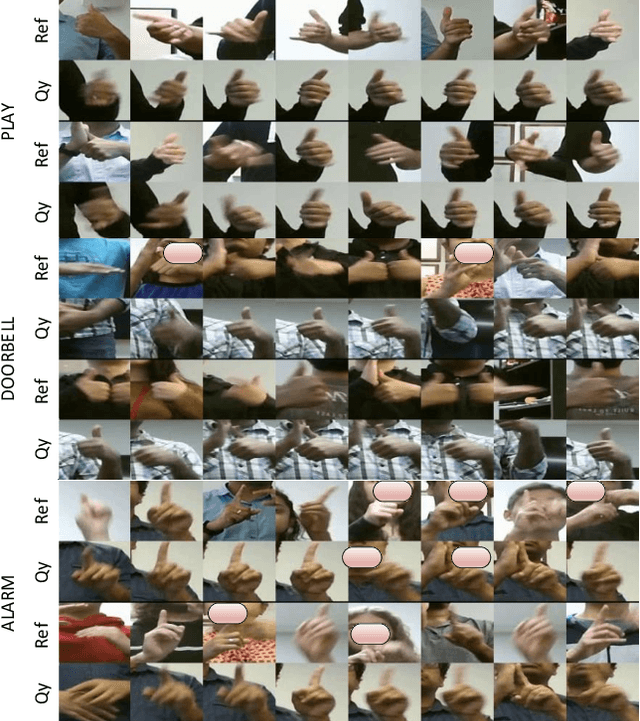
Abstract:American Sign Language recognition is a difficult gesture recognition problem, characterized by fast, highly articulate gestures. These are comprised of arm movements with different hand shapes, facial expression and head movements. Among these components, hand shape is the vital, often the most discriminative part of a gesture. In this work, we present an approach for effective learning of hand shape embeddings, which are discriminative for ASL gestures. For hand shape recognition our method uses a mix of manually labelled hand shapes and high confidence predictions to train deep convolutional neural network (CNN). The sequential gesture component is captured by recursive neural network (RNN) trained on the embeddings learned in the first stage. We will demonstrate that higher quality hand shape models can significantly improve the accuracy of final video gesture classification in challenging conditions with variety of speakers, different illumination and significant motion blurr. We compare our model to alternative approaches exploiting different modalities and representations of the data and show improved video gesture recognition accuracy on GMU-ASL51 benchmark dataset
Sign Language Recognition Analysis using Multimodal Data
Sep 24, 2019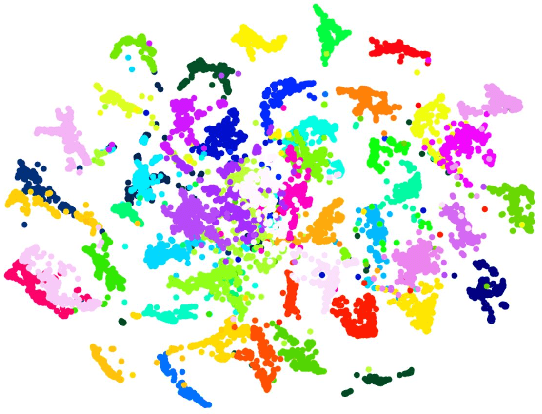
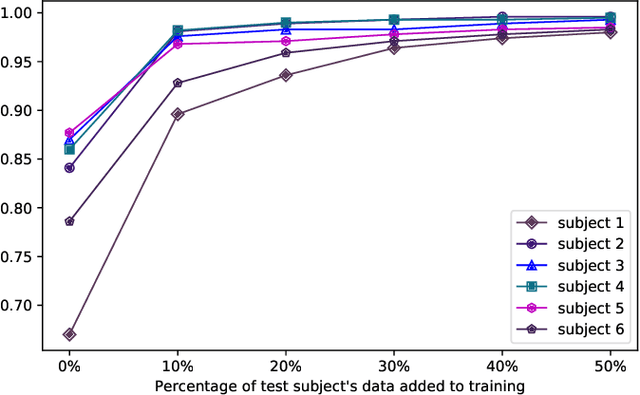
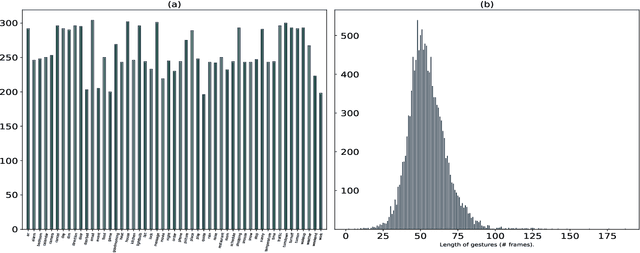
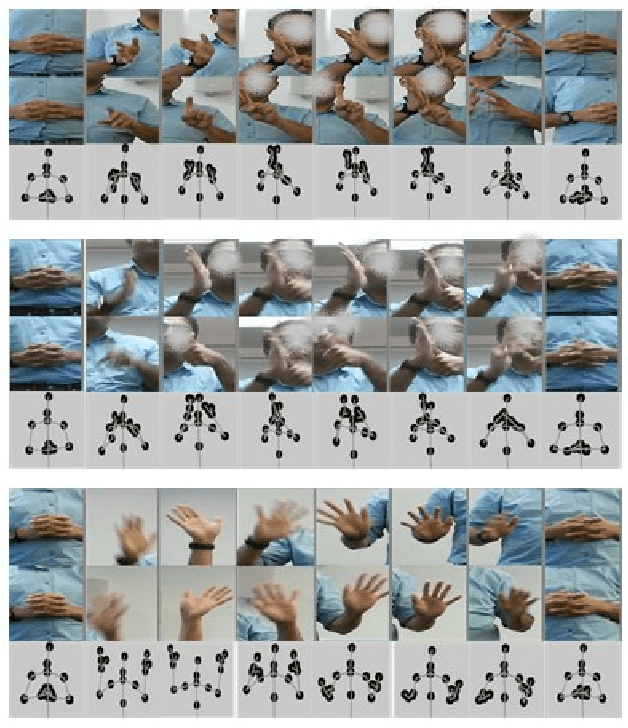
Abstract:Voice-controlled personal and home assistants (such as the Amazon Echo and Apple Siri) are becoming increasingly popular for a variety of applications. However, the benefits of these technologies are not readily accessible to Deaf or Hard-ofHearing (DHH) users. The objective of this study is to develop and evaluate a sign recognition system using multiple modalities that can be used by DHH signers to interact with voice-controlled devices. With the advancement of depth sensors, skeletal data is used for applications like video analysis and activity recognition. Despite having similarity with the well-studied human activity recognition, the use of 3D skeleton data in sign language recognition is rare. This is because unlike activity recognition, sign language is mostly dependent on hand shape pattern. In this work, we investigate the feasibility of using skeletal and RGB video data for sign language recognition using a combination of different deep learning architectures. We validate our results on a large-scale American Sign Language (ASL) dataset of 12 users and 13107 samples across 51 signs. It is named as GMUASL51. We collected the dataset over 6 months and it will be publicly released in the hope of spurring further machine learning research towards providing improved accessibility for digital assistants.
 Add to Chrome
Add to Chrome Add to Firefox
Add to Firefox Add to Edge
Add to Edge